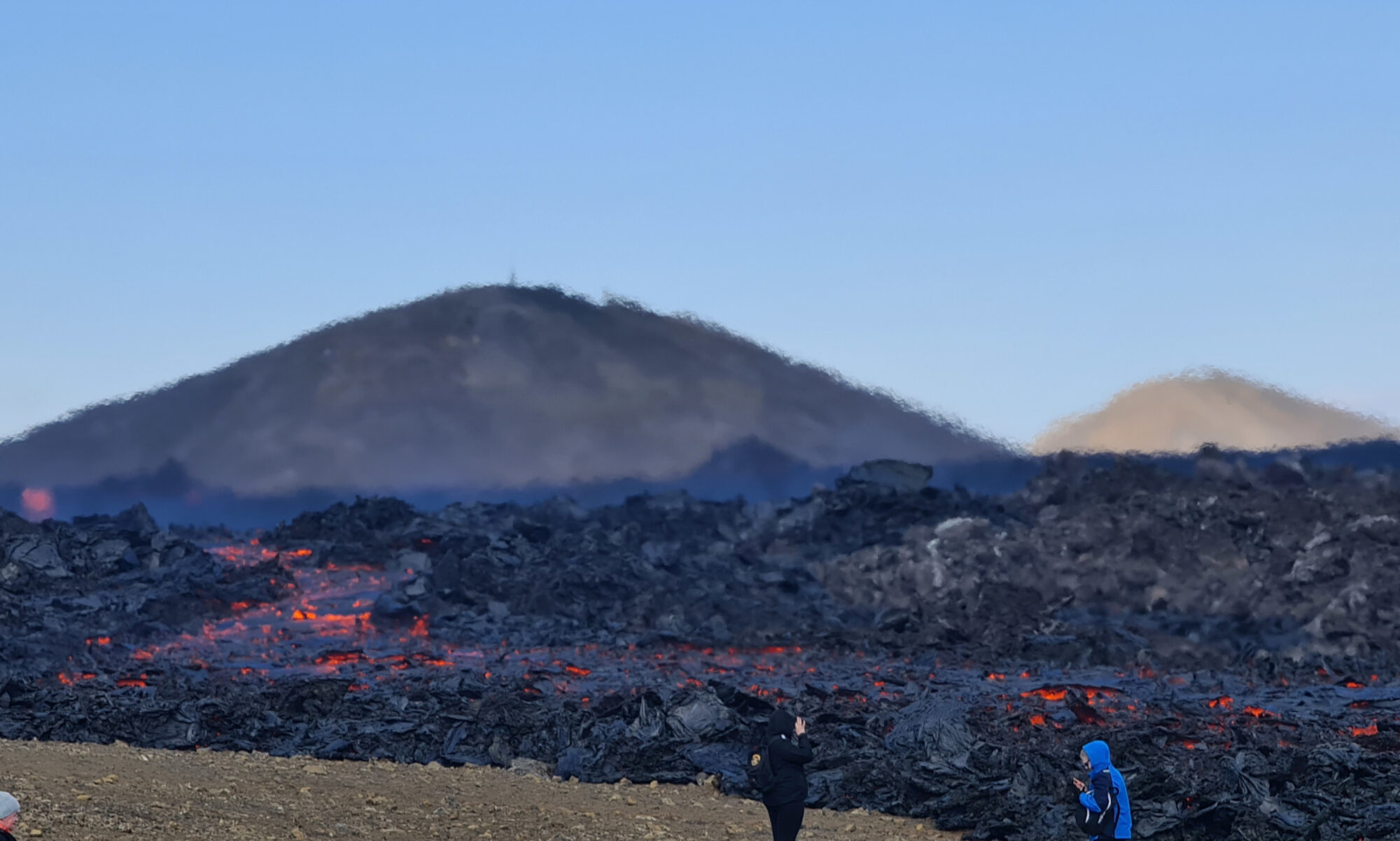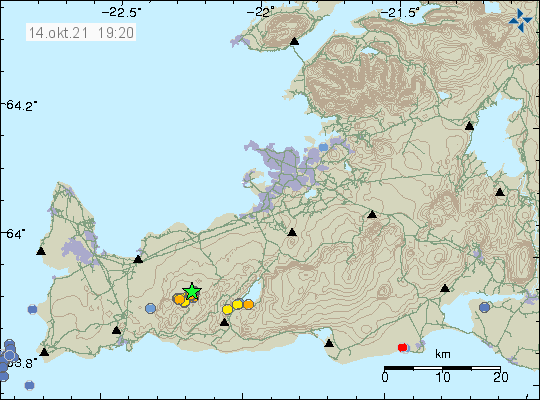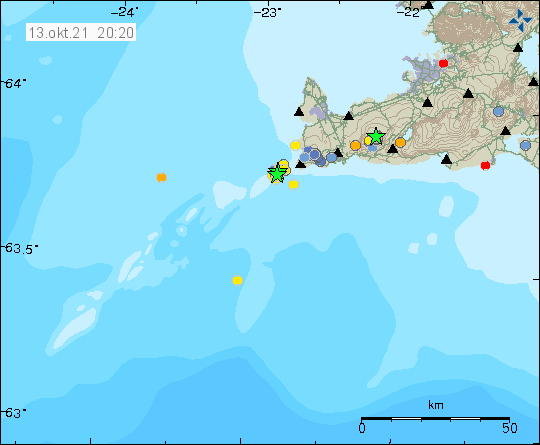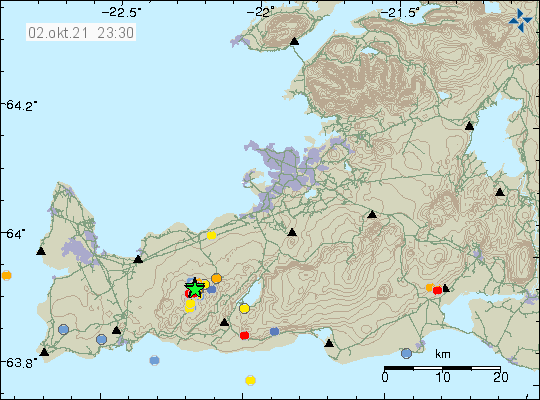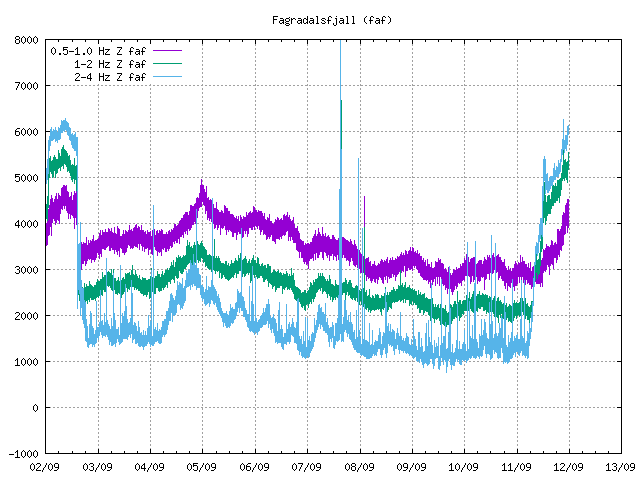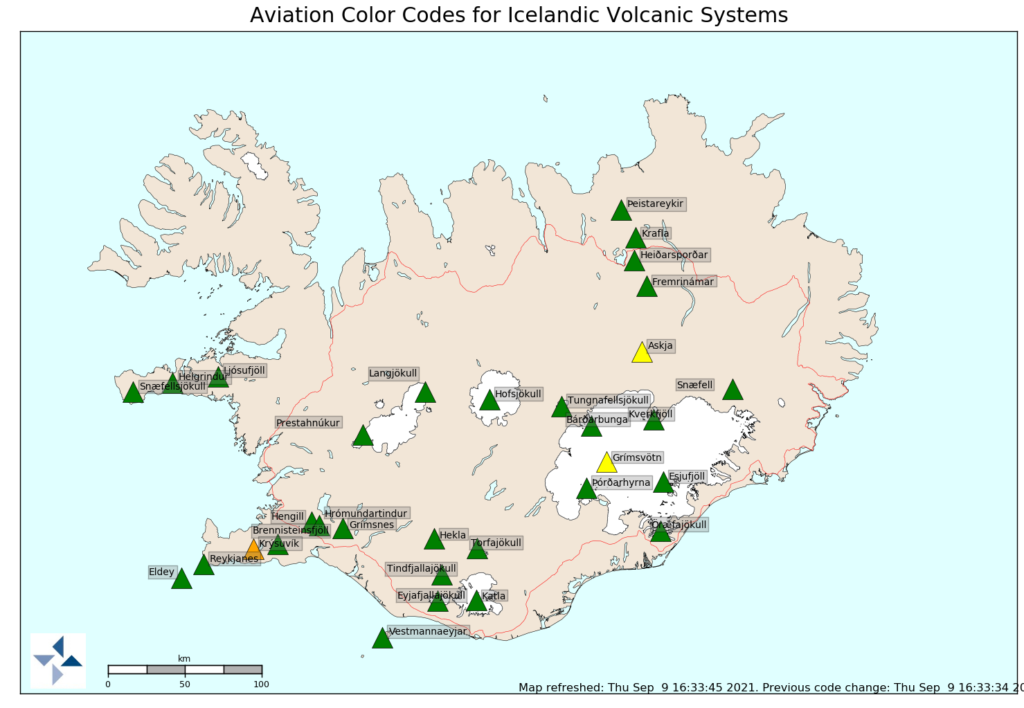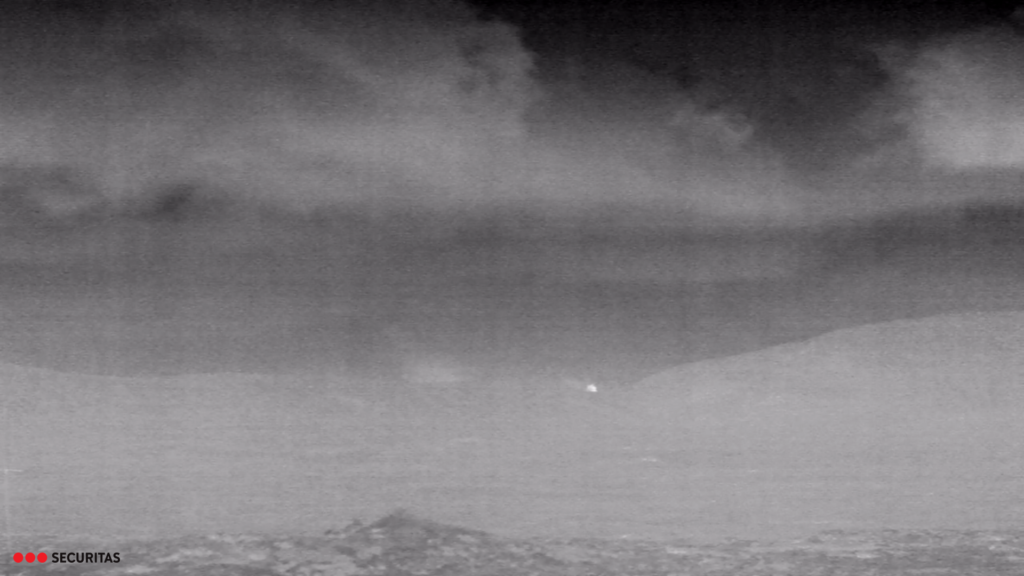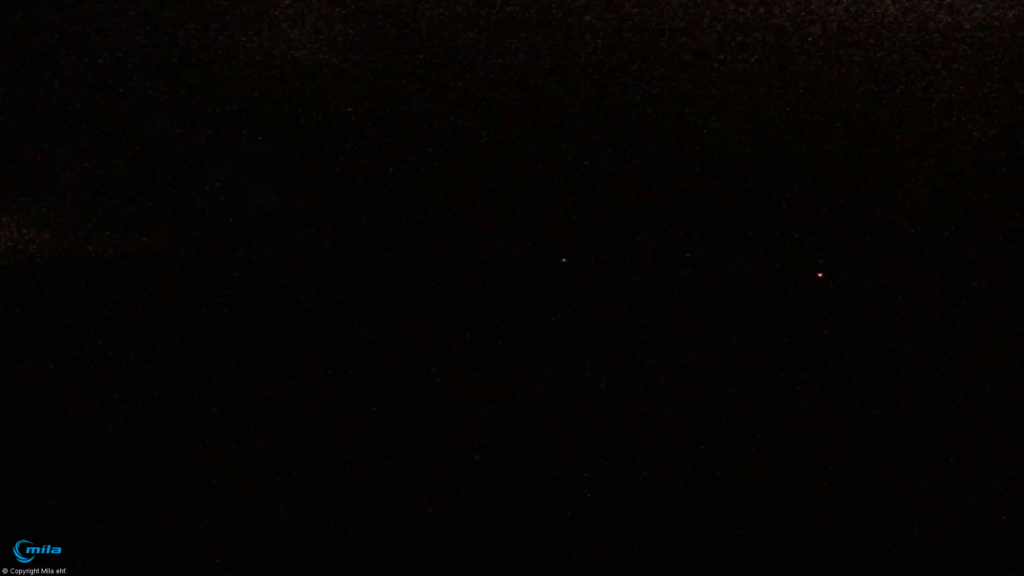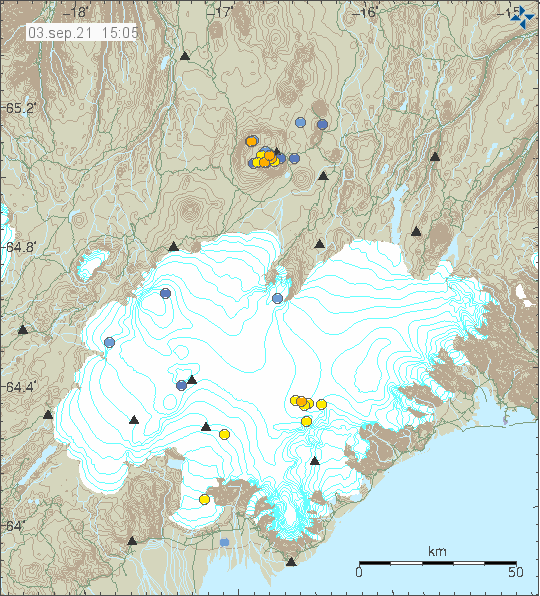According to an announcement made by Icelandic Met Office there has been a swarm of low frequency earthquakes in Torfajökull volcano since midnight of 28-October-2021. The earthquakes don’t appear clearly on the Icelandic Met Office map but they can be seen on nearby SIL stations. According to Icelandic Met Office the rate of earthquake activity is about 1 – 2 earthquake every 15 minutes.
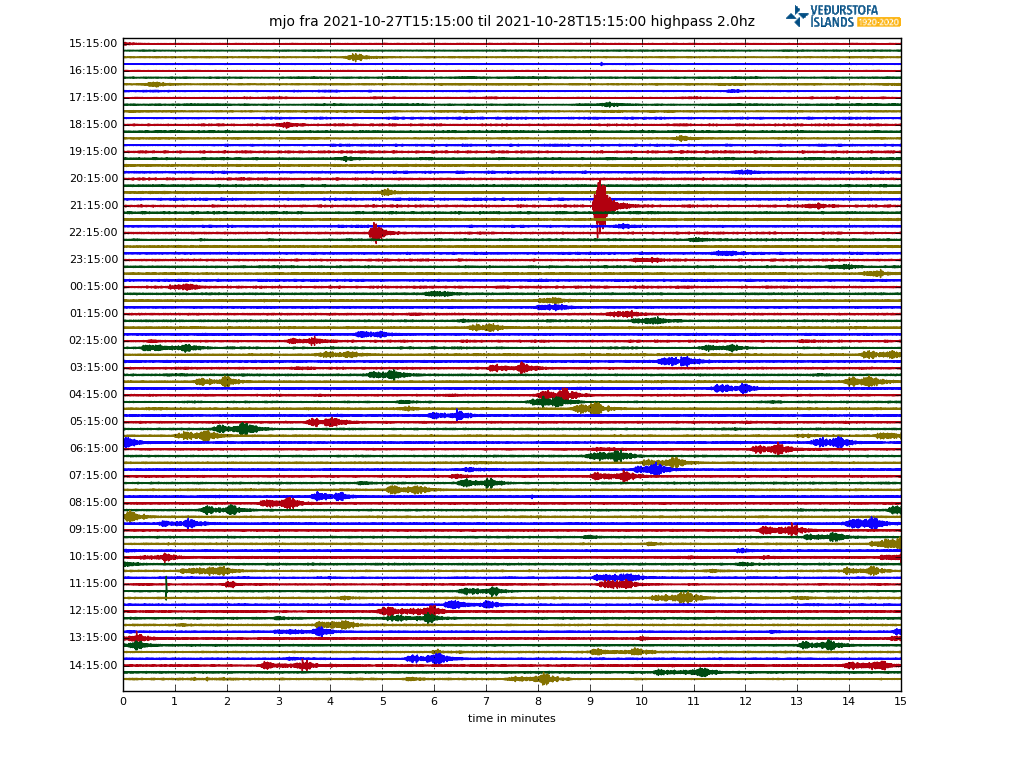
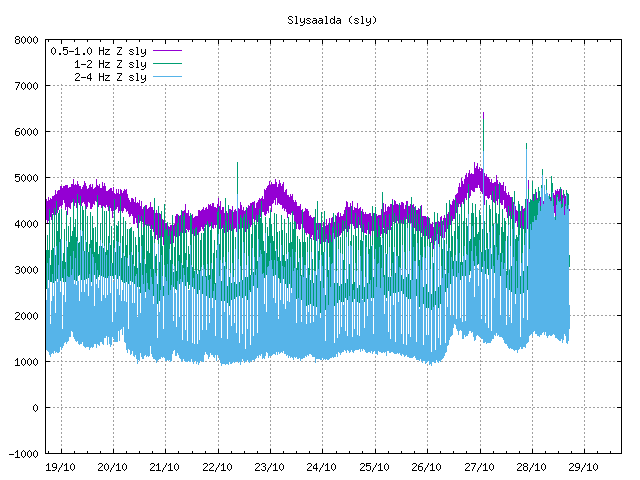
There are two things that can create this type of low frequency activity. The first one is water that has been superheated in the crust. The second option is that magma is now moving in Torfajökull volcano. This type of activity has happened before without any eruption happening. I think that is going to be the same now at the writing of this article. Since this is an active volcano the situation can change quickly and without warning.
There are no web cameras in the area that I know of. It is remote and there is almost no mobile coverage at this location. If there is a mobile connection, it is limited to 2G (GSM) or slow 3G connection.
